
|
|
Rescued from Oblivion - the Hassad Barstock Special Re-Created
Latter-day renditions of classic model engines generally fall into one of two categories – replicas and reproductions. The first and most common of these categories includes engines which are created using all-new dies and tooling with the intention of producing as accurate a copy or look-alike of the original engine as possible. An actual example of the original engine is invariably taken as the prototype for replica productions. There are numerous examples of such engines from an amazing range of makers worldwide. Some of these actually exceed the quality and performance of the originals and are valued collectibles in their own right. A fine example is the late David Owen's superb replica of Gordon Burford's 1958 Taipan 2.5 cc Mk. 3 diesel. A full review and test of this outstanding creation may be found elsewhere on this website. Responsible constructors of replicas generally include some form of identification marking or some distinguishing feature to ensure that their products cannot be passed off as originals to a knowledgeable buyer. However, sorry experience has shown that this does not prevent some unscrupulous individuals from trying this anyway – buyer beware!! There's no better protection against fraud of this nature than becoming well informed. That's a major goal of the articles on this site - to promote the development of a well-informed marketplace for collectible model engines. The second and less common category - reproductions - includes engines which represent the resumption of production of the original by a different maker using the original plans, tooling, dies, etc., to the extent possible. The Aurora Mills and Taplin Twin models from India as well as the Tom Ridley Olivers fall into this category. Naturally, many latter-day productions fall somewhere between the cracks, but these are the main categories generally encountered.
The feasibility of producing a credible re-creation of an engine of which no example is available to serve as the prototype is entirely dependent upon the availaibility of sufficiently detailed and authoritative secondary evidence. In such cases, there’s no guarantee of complete authenticity, but then there’s also no basis for challenging said authenticity – it would take the appearance of an original to do that. In this article, I’ll describe just such an engine. This is a superb re-creation of Ira Hassad’s impressive barstock .601 cuin. (9.85 cc) prototype from the early This is by no means Don’s first appearance on this website - his work has appeared in a number of the For now, it will suffice to say that the present-day rarity of original Hassad engines is such that I would have been quite unable to present first-hand images of most of them were it not for the fine replicas which Don has painstakingly produced over the years. All of the images of Hassad engines which accompany the present article reflect Don’s outstanding work in replicating these engines to an extremely high standard of accuracy and precision. I’m sure that you’ll be as impressed as I have been! In the previously-mentioned separate article to be found on this website, I set out the story of California resident Ira James Hassad (1915–1981), who was without doubt one of America’s most talented and original model racing engine designers of the 1940’s. Readers who are interested in the whole Hassad saga are referred to that article – I will not repeat the majority of that material here.
Other designers joined Hassad in attempting to keep the large FRV racing engine alive and well. Prominent among these were the designers of the Ball 60 and the Bungay Hi-Speed 600, both of which were fine engines in their own right. There was also the Ken 61 which despite its lack of competition success was perhaps the most original design of them all in that it combined a front rotary disc (FRD) induction system with a form of crankcase turbo-charging. More of all these models in separate articles. As an active competitor himself, Ira Hassad was of course very well aware of all of these competing designs, since Ira's son Jim has informed us that during the war years his father's enthusiasm for model engine design and manufacture largely evaporated as his interests became more focused upon high-performance full-sized automobiles. However, he still had a living to make. Accordingly, following the conclusion of hostilities in August 1945 Ira Hassad resumed the production of model racing engines using the FRV induction principle which he continued to favor despite his pre-war H.R.E. experiment. His reputation among model enthusiasts was such that he was able to charge premium prices for his engines, making this a relatively lucrative venture. The initial result of Ira's efforts was the 1946 appearance of the individually hand-crafted Hassad Custom 61, which was reportedly designed by Ira's good friend Bill Batzloff. Perhaps 250 examples of this outstanding engine may have ended up being made over a one-year period. The illustrated example is another of Don Sohn’s fine replicas.
While Ira was proceeding along this development path, the Dooling Brothers of Los Angeles had been hard at work developing a new ultra short-stroke RRV racing 61 which duly made its appearance in mid 1947. This remarkable engine redefined the design agenda at a single stroke, setting a new performance standard which left all others in the shade. Ray Snow tried unsuccessfully to respond with the bulge bypass version of the Hornet 60, while the McCoy 60 was redesigned into the far more powerful Series 20 version which was able to give the Dooling a good run for its money. However, designs like the Edco Sky Devil and its Hassad-designed FRV successor, the Bluestreak 65, were left high and dry. It was at around this time that Ira created one of his true masterpieces - the previously-illustrated barstock special In terms of its general design style, the barstock special fits right in with the leading-edge models which were appearing during the latter part of the 1940’s, most notably the Dooling 61. The downdraft RRV induction coupled with the seemingly very short stroke of the engine suggested by its external architecture and dimensions combine to suggest a strong Dooling influence. Such features were in no way typical of any of Ira’s other designs at any time. Taking these points into account, it appears likely that the creation of this prototype was Ira’s response to the mid 1947 appearance and subsequent dominance of the Dooling 61. Indeed, Jim Hassad confirms that Ira was strongly influenced by the design of the Dooling in creating this engine, while at the same time trying more radical port timing as well as the use of both piston skirt ports and a conventional bypass with a lower entry to supplement the piston ports. In developing this prototype, Ira seems to have taken a long hard look at the Dooling 61 with its ultra-short stroke and decided to see if he could develop a design that could compete with it, something that his contemporary Sky Devil design of 1947 and subsequent Bluestreak model of 1948 most emphatically could not do. Interestingly enough, he chose to go along with Dooling by using RRV induction for the resulting barstock prototype along with a single side-stack exhaust, a down-draft intake and a Dooling-style timer. He also seems to have adopted the Dooling’s extremely short-stroke internal geometry as well as its piston skirt ports.
However, in a series of conversations in 1973 with Bill Thompson (reported in the pages of "Engine Collector's Journal" (ECJ) nos. 46 and 47), Ira specifically mentioned his disappointment with the performance of the 1948 Bluestreak 65. It would have been completely natural for him to have seen this as a case of unfinished business, which may have led to this barstock prototype being made in 1948 using Dooling-inspired technology such as the ultra-short stroke, the side-stack exhaust, the piston skirt ports and the downdraft RRV induction. The main purpose would have been to confirm in Ira's own mind that he retained the ability to produce leading-edge high-performance model engine designs. To put it very simply, he may have been unwilling to allow the somewhat less-than-successful Bluestreak 65 to stand as the final word on his model engine design capabilities. The barstock special may thus be seen as an expression of Ira's determination to go out on a high note as far as his model engine designing career was concerned.
Finally, this scenario may also explain Ira’s failure to mention the engine to Bill Thompson, who was after all specifically inquiring about Ira’s career in the commercial model engine industry. Ira may have seen this engine as an irrelevant post-script in that context, and one which dated from a period later than that in which Bill Thompson was interested. It was certainly well out of the mainstream of Ira's model engine design activities, having no connection whatsoever with any of his attested commercial designs. In summary, it appears that the Hassad barstock special was a one-off project constructed by Ira after the Bluestreak 65 interlude to serve as his swan-song as a model engine designer, a role which the less-than-successful Bluestreak had failed to fill in Ira's own mind. Jim Hassad told me that his father went so far as to install the barstock special in a tether car chassis. However, as far as Jim was aware, Ira never got around to actually running the engine, probably because of his change of focus in 1949 with the creation of his new business, his growing involvement with the hot rod movement and the arrival of his son. Jim shared an amusing anecdote in relation to this engine. In around 1961, when he was 12 years old, Jim succumbed to a fit of youthful curiosity and dug out the barstock special, still installed in its car chassis. Like any venturesome kid who already knew the probable response, Jim naturally omitted to tell his father about his plan to try running the engine! Fitting it with a glow-plug, Jim tried starting the car using a push broom in his Dad's driveway, but without success. Years later, Jim shared the story with Ira, whose immediate comment was “Thank God it didn’t start!”. At the time, the Hassads lived high on a hill about 10 blocks away from San Diego's Lindbergh Field (now San Diego International Airport). If it had started, the free-running car would have set a speed record to the airport, potentially causing who knows how much mayhem along the way! There's a bittersweet postscript to this story. Prior to his death in May 1981, Ira had spent the years 1977-1978 completing one example of every model engine that he had ever designed, using original castings that he had saved over the years. He subsequently designated this series of engines plus a few original survivors from the old days to be a gift to his grandson (Jim Hassad's son Brett) by way of a legacy. This bequest included the barstock special, still mounted in its car chassis. Since Brett was only one year old at the time of Ira's death, these “legacy” engines remained in Jim's care until Brett was settled enough to properly care for them. In accordance with Ira's wishes, Brett took possession of these engines, including the hydroplane with the 1941 championship rail car engine and the tether car with the unique “barstock” engine, in around 2013. Sadly, the relationship between Jim and Brett subsequently deteriorated to the point where all communication between father and son ceased. Jim therefore has no knowledge of the current status and disposition of these engines. All that is known is that they're out there somewhere. Not, one suspects, the way in which Ira would have wanted this story to end .............. The Creation of a Re-Creation
As stated earlier, Ira himself was notably silent on the subject of this prototype, not so much as mentioning it in his 1973 conversations with Bill Thompson. Consequently, until the 2018 contact from Jim Hassad the existence of Ira’s unique prototype was only known through the fortuitous survival of a few somewhat deteriorated but still sufficiently clear photographs of the original engine. The name of the photographer is unknown, as are the date and circumstances under which the photos were taken. There are no surviving negatives, notes or drawings. The original engine was last "seen" being transferred to Brett Hassad in around 2013, but its present whereabouts and status are unknown. The existence of the previously-illustrated latter-day re-creation of the engine was made possible solely because copies of the photos of the original Hassad barstock special ended up in the hands of the aforementioned master engine builder Don Sohn. He obtained these images from a customer who had In the absence of any drawings, Don was forced to rely upon the insights gained through his own long experience as an engine builder. Looking at the photos, he noted the engine’s relatively squat appearance and the large diameter of its cylinder jacket in relation to its height. This very definitely implied that it was an ultra short-stroke design. Don reasoned that if it was constructed at some point after mid 1947 (as is now known to have been the case based on Jim Hassad's evidence), it may well have been modelled upon the ultra-short stroke configuration which had proved so successful in the Dooling 61. This would certainly be consistent with its rather squat appearance. Don decided that he would assume that the engine had a more or less similar bore/stroke ratio to that of the Dooling design and see where that assumption led him.
Fortunately, two of the available photos of the original engine were taken almost directly from opposite sides, consequently having relatively little angular distortion. Using the plug as a scale reference object, it was possible to scale off a very close estimate of the head diameter. In addition, the visible shaft and front ball race in a third view also provided reliable scale reference dimensions. Using the scale factors obtained in this manner and continually cross-checking the results to ensure consistency, Don was able to scale all of the other key external dimensions. Reference to the drawings which resulted from the derived external dimensions showed that the engine was able to accommodate the Yellow Jacket cylinder and crankshaft perfectly. Naturally there’s absolutely no proof that the dimensions of these components are in fact correct, but the resulting engine turned out to be an extremely close look-alike representation of the original Hassad Barstock prototype seen in the photographs. It would appear that if the internal dimensions aren’t in fact correct, they’re not very far off. They're certainly close enough for me! The engine does not rely solely upon the Dooling bulge bypass arrangement, incorporating a more conventional vertical bypass communicating directly with the crankcase in addition to the piston skirt ports of the Yellow Jacket from which its piston/cylinder set was derived. These ports will improve transfer gas access to the bypass as well as promoting improved piston cooling. According to Jim Hassad, this arrangement accurately reflects the design of the original engine, which he had the opportunity to examine in some detail. He tells us that the piston of the original barstock special was itself machined from bar stock (or perhaps a billet cast from suitable alloy) and was a real work of art, in his words "light as a feather". The engine also utilizes an intake venturi of typical “trademark” Hassad configuration – very long and widely bell-mouthed. A degree of Hornet influence is apparent in the use of a separate component incorporating the upper bypass, exhaust stack and cooling fins. This component is attached to the lower crankcase by four studs and nuts in true Hornet fashion.
Like all of the engines produced by Don Sohn, this re-created unit is constructed and finished to the very highest standards throughout. Indeed, the engine's quality is such that it is as much a work of art as it is an example of fine model engine construction. I’m sure that Ira Hassad himself would view this re-creation as a high compliment to his own abilities as well as those of Don Sohn. I feel very fortunate indeed to have been granted the opportunity to acquire one of the very few examples that will ever exist of this fine expression of the model engine builder’s craft. Don told me that at the time of writing (March 2017) he had started three examples of this engine. The illustrated example was the first to be completed and was to have been his own, but the other two were somewhat delayed, so he very kindly passed this example along to me. A second engine is spoken for and the third will be Don's own. He informed me that he might be willing to make one or two more if anyone cared to place an order. I haven’t run my example up to this point. If I ever do so, I will add my user impressions to this article. For now, I leave my readers to enjoy the attached images of a true unsung masterpiece which has quite literally been brought back from oblivion by my good friend Don Sohn. Thanks, mate! __________________________ Article © Adrian C. Duncan, Coquitlam, BC, Canada First published April 2017 Updated September 2018
|
| |
 And now for something completely different, as Monty Python's John Cleese said once or twice ………!
And now for something completely different, as Monty Python's John Cleese said once or twice ………!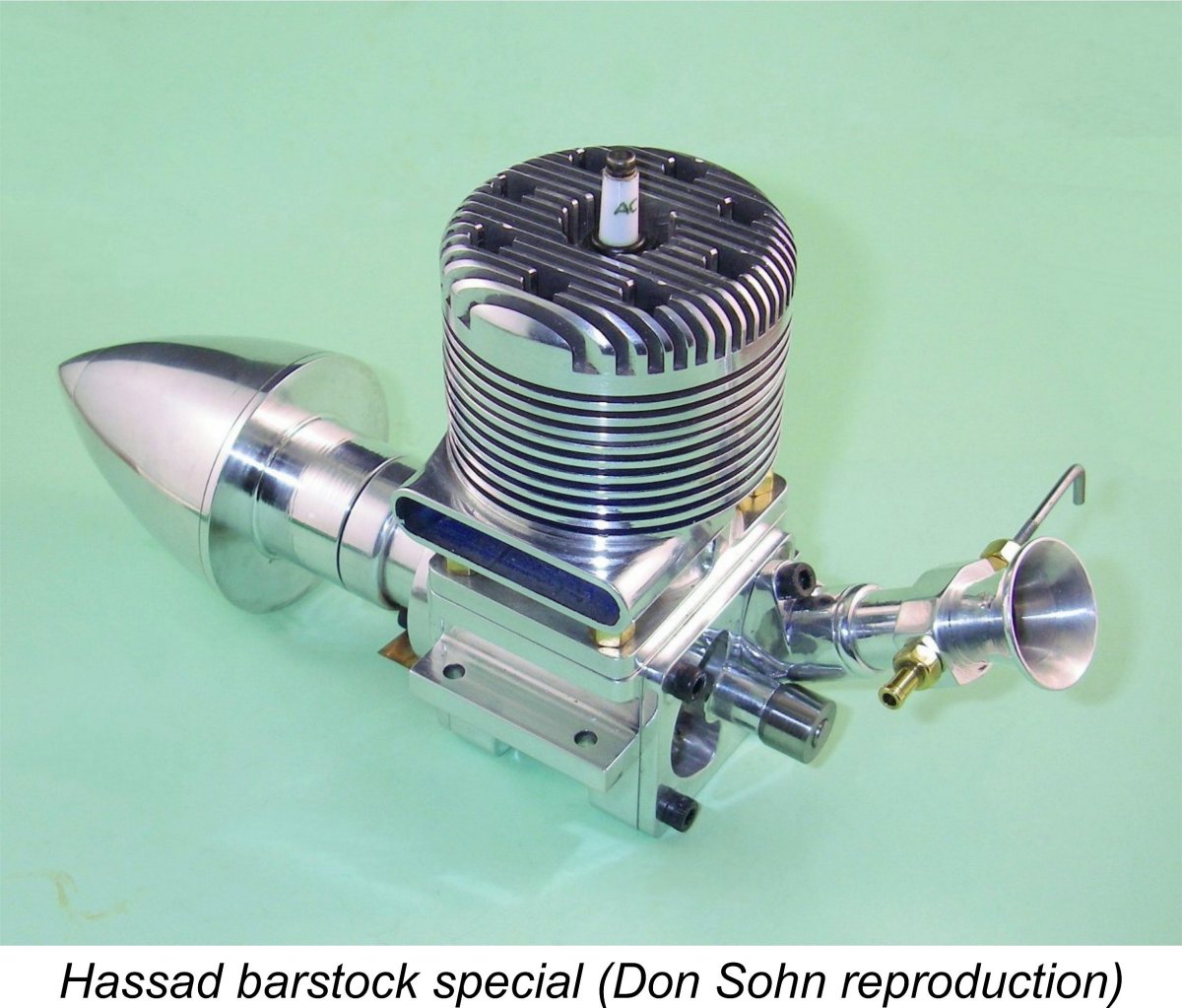 However, there is a third category – re-creations. This very rare and uniquely challenging category encompasses engines of which no known examples survive to copy and which are therefore necessarily re-created by their talented latter-day constructors through the resurrection and execution of their designs based entirely on such secondary evidence of their original configuration as may be available.
However, there is a third category – re-creations. This very rare and uniquely challenging category encompasses engines of which no known examples survive to copy and which are therefore necessarily re-created by their talented latter-day constructors through the resurrection and execution of their designs based entirely on such secondary evidence of their original configuration as may be available. 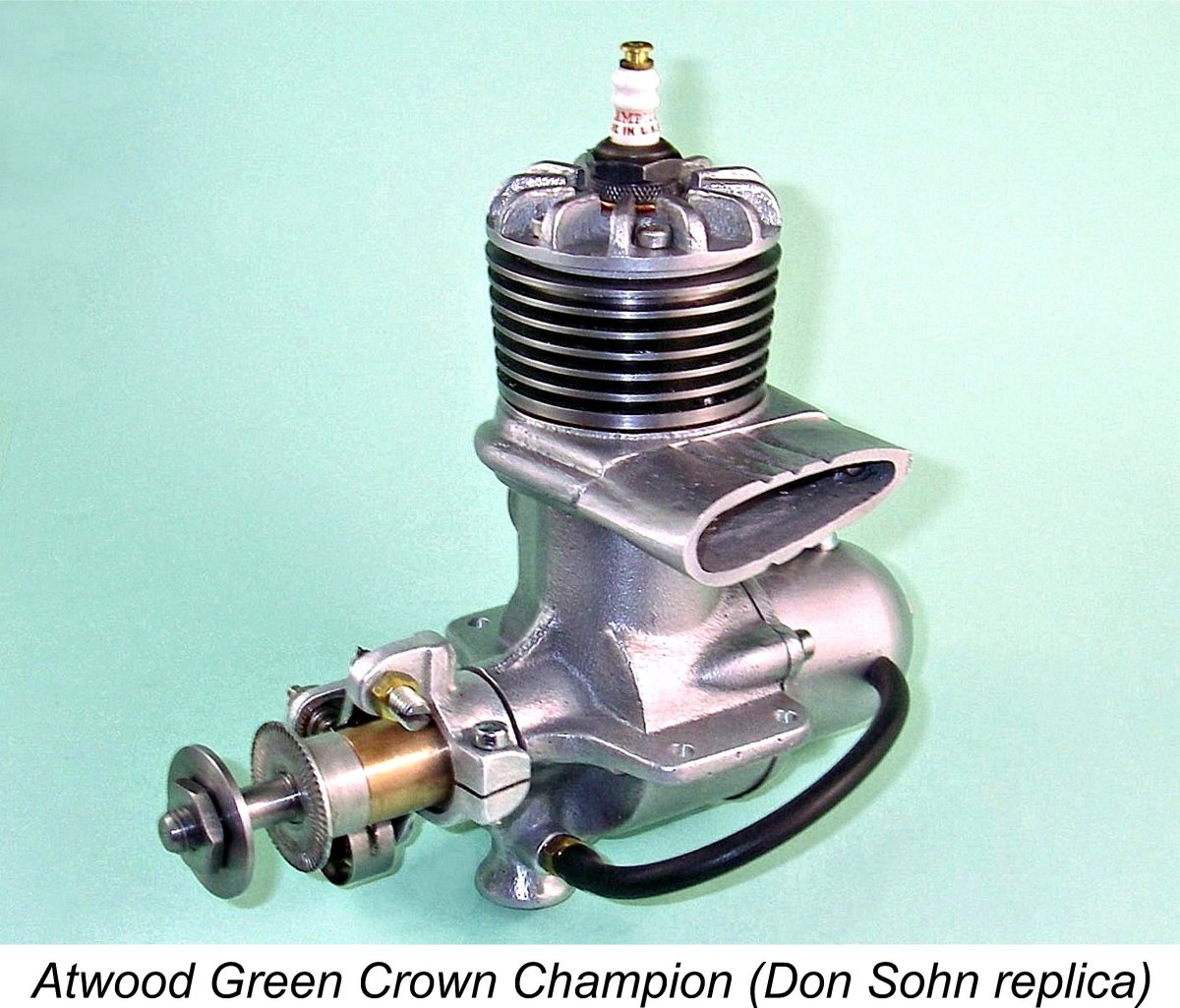
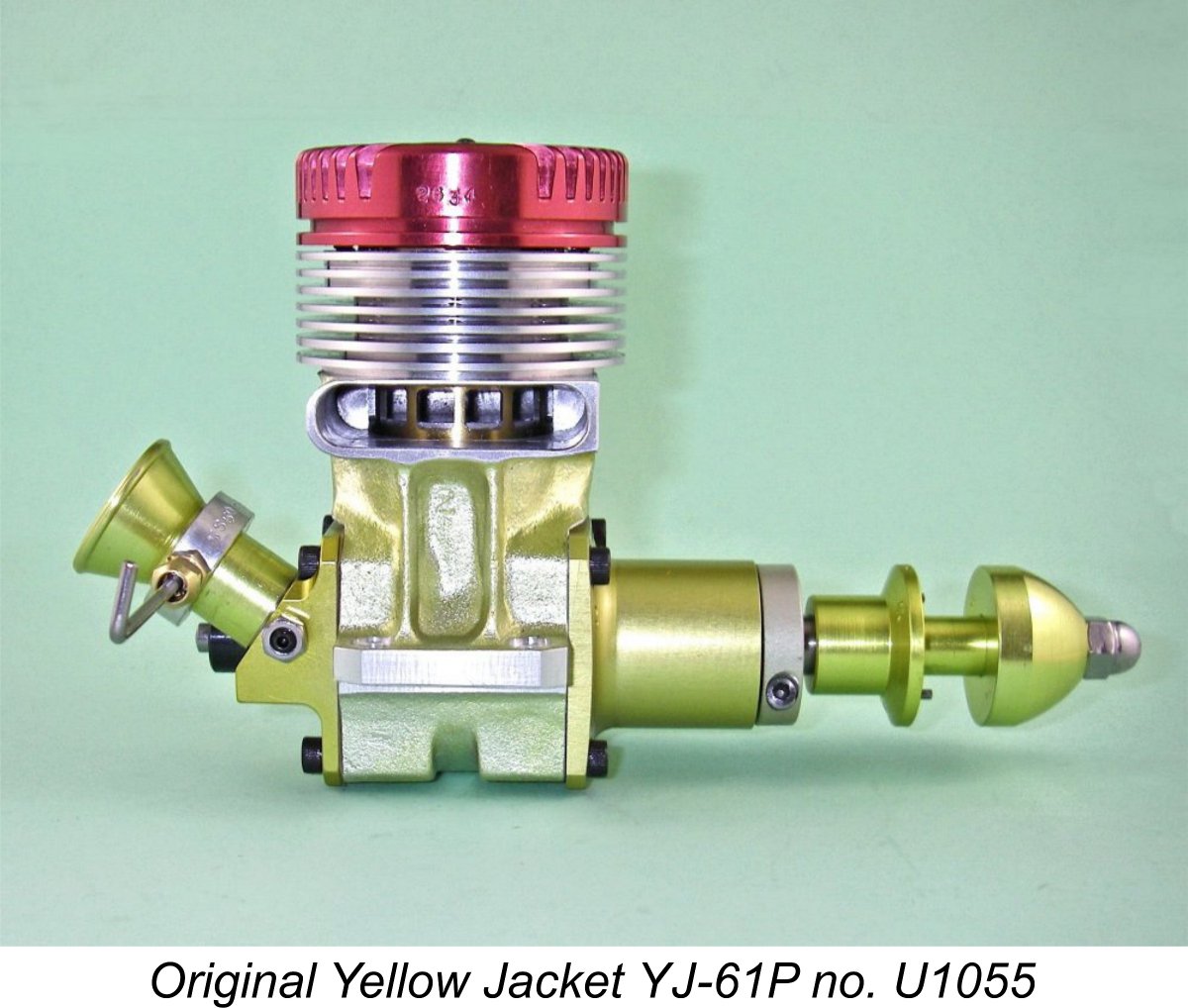
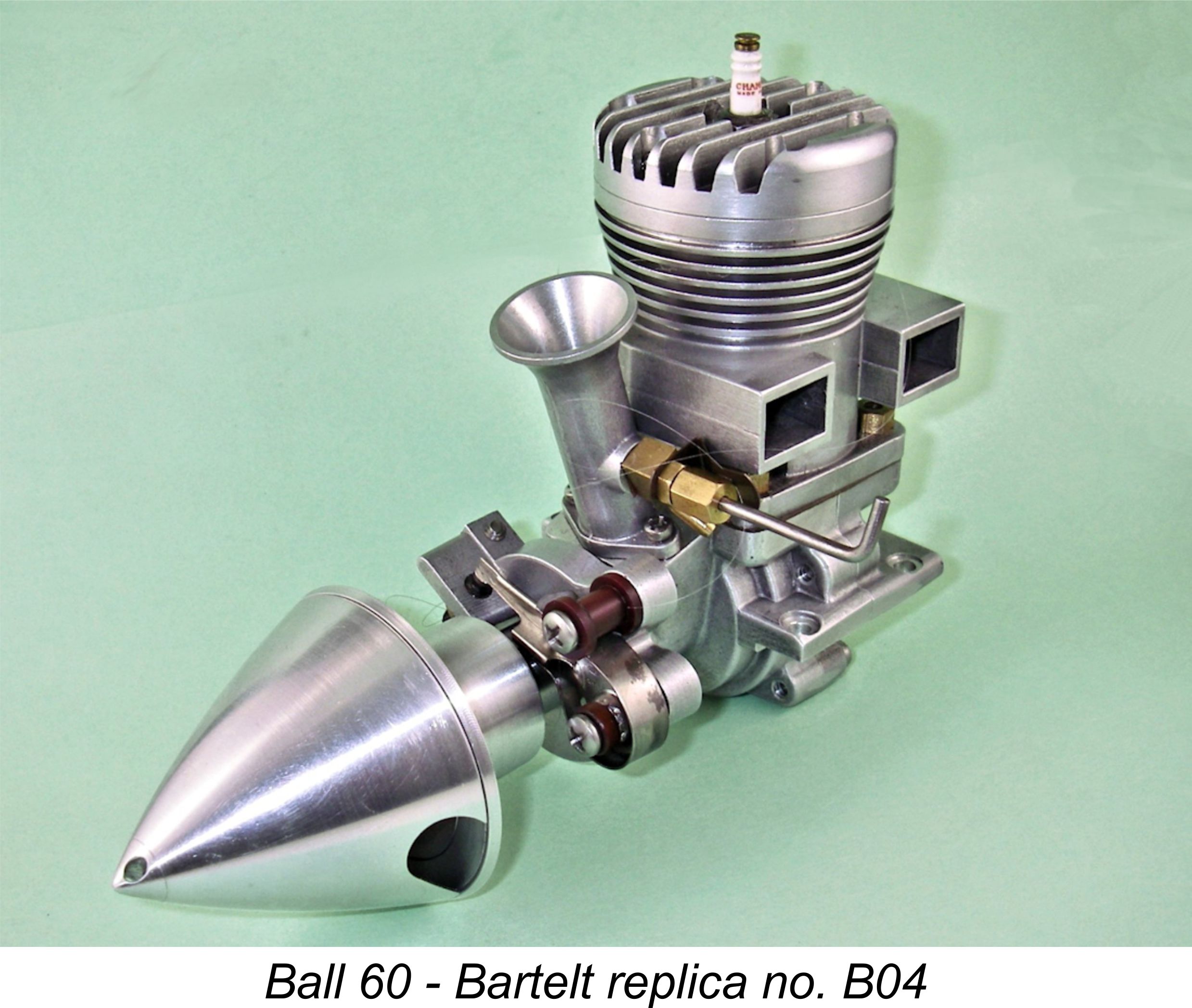 Suffice it for present purposes to say that Ira Hassad was perhaps the foremost model racing engine designer of his day to remain steadfastly committed to the crankshaft front rotary valve (FRV) induction system in the face of the ever-growing competition from the disc rear rotary valve (RRV) designs which were becoming increasingly dominant in the years immediately following WW2. Notable examples of this trend included the pioneering
Suffice it for present purposes to say that Ira Hassad was perhaps the foremost model racing engine designer of his day to remain steadfastly committed to the crankshaft front rotary valve (FRV) induction system in the face of the ever-growing competition from the disc rear rotary valve (RRV) designs which were becoming increasingly dominant in the years immediately following WW2. Notable examples of this trend included the pioneering 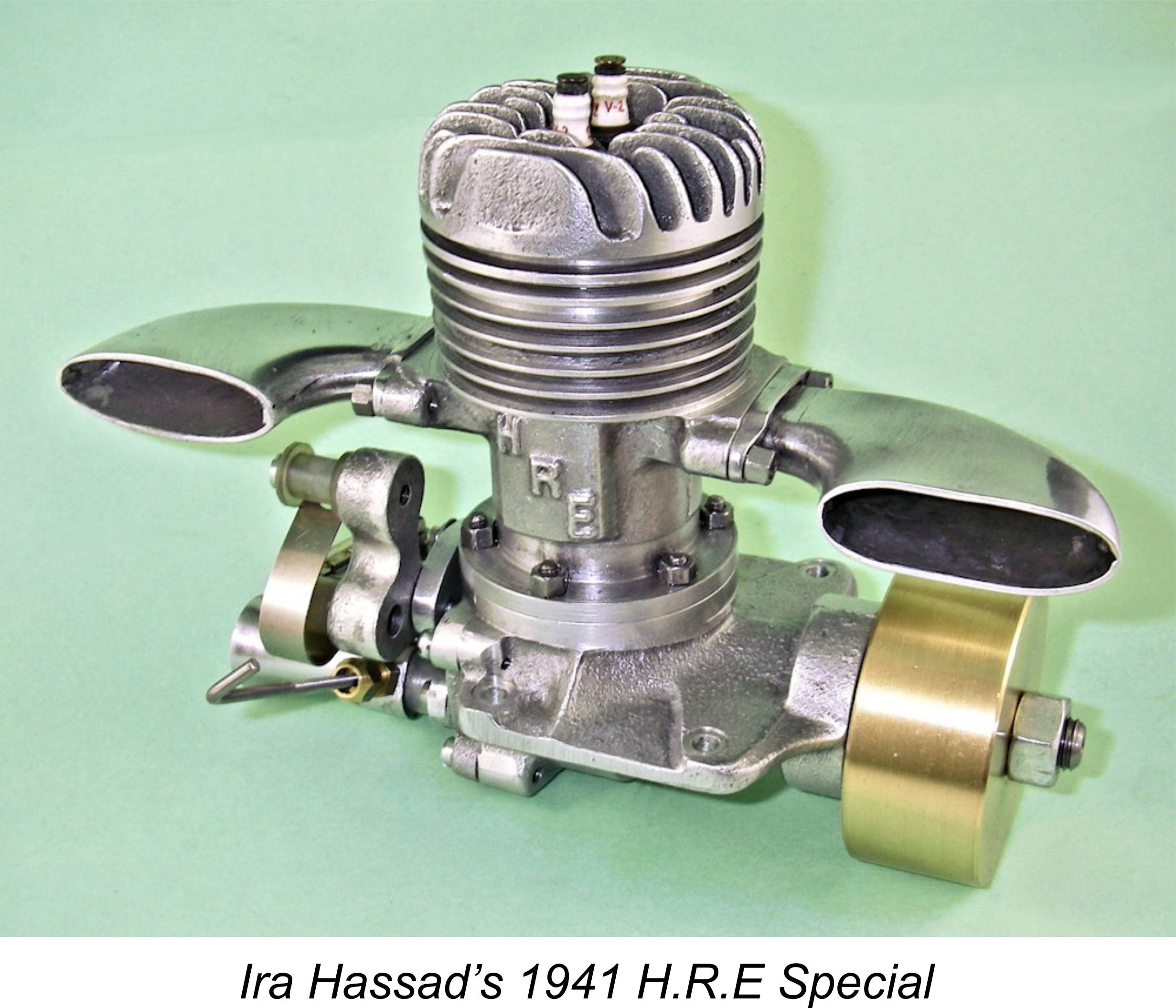
 The Hassad Custom 61 was a very competitive engine indeed, but it was able to do no more than keep pace with the RRV competition. Ira went on to develop the 1947 Edco Sky Devil, which was in effect a production-line version of the individually-produced Custom 61. Being mass-produced to somewhat lower standards of precision, the Sky Devil could not match the Hassad Custom in performance terms.
The Hassad Custom 61 was a very competitive engine indeed, but it was able to do no more than keep pace with the RRV competition. Ira went on to develop the 1947 Edco Sky Devil, which was in effect a production-line version of the individually-produced Custom 61. Being mass-produced to somewhat lower standards of precision, the Sky Devil could not match the Hassad Custom in performance terms.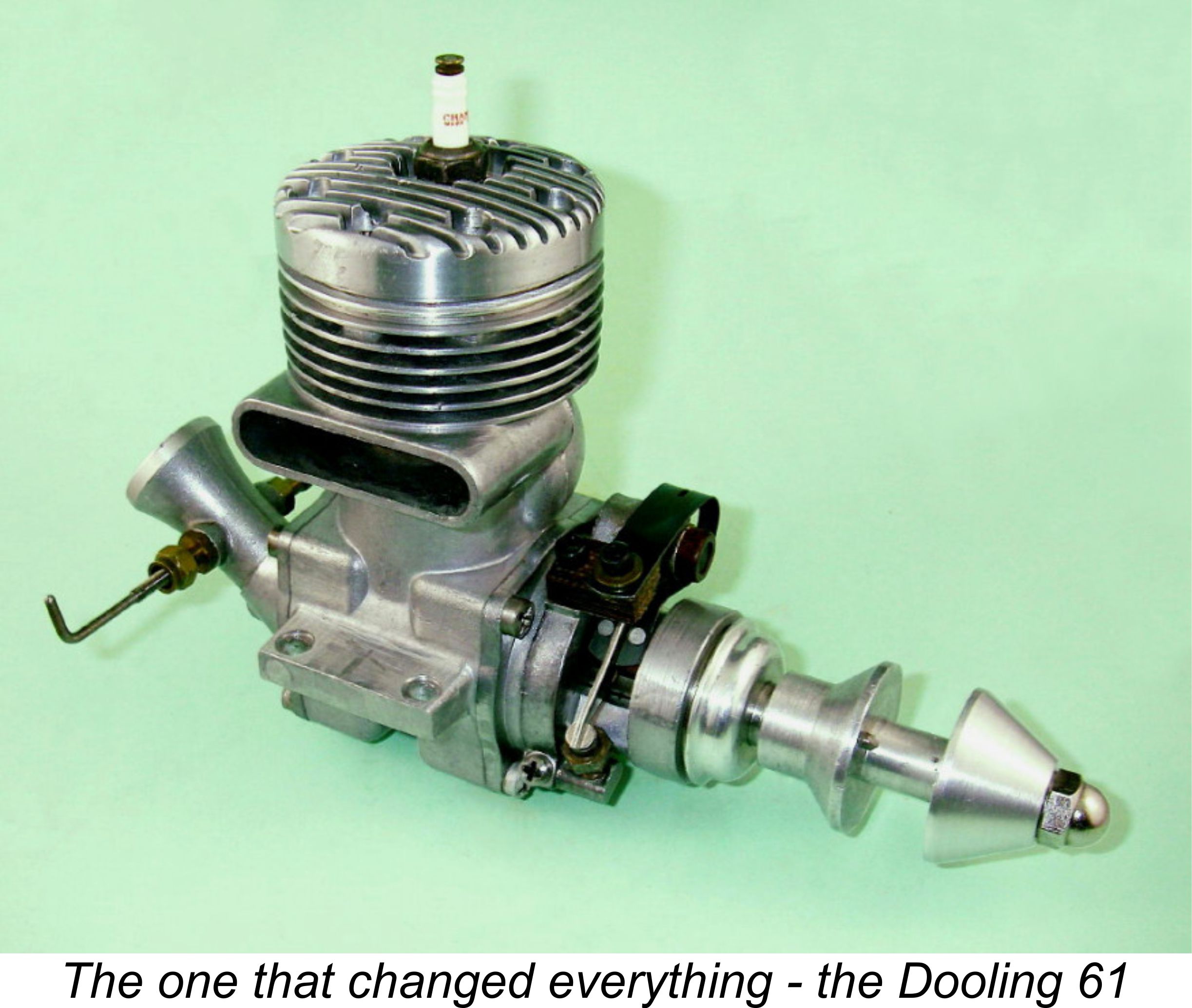
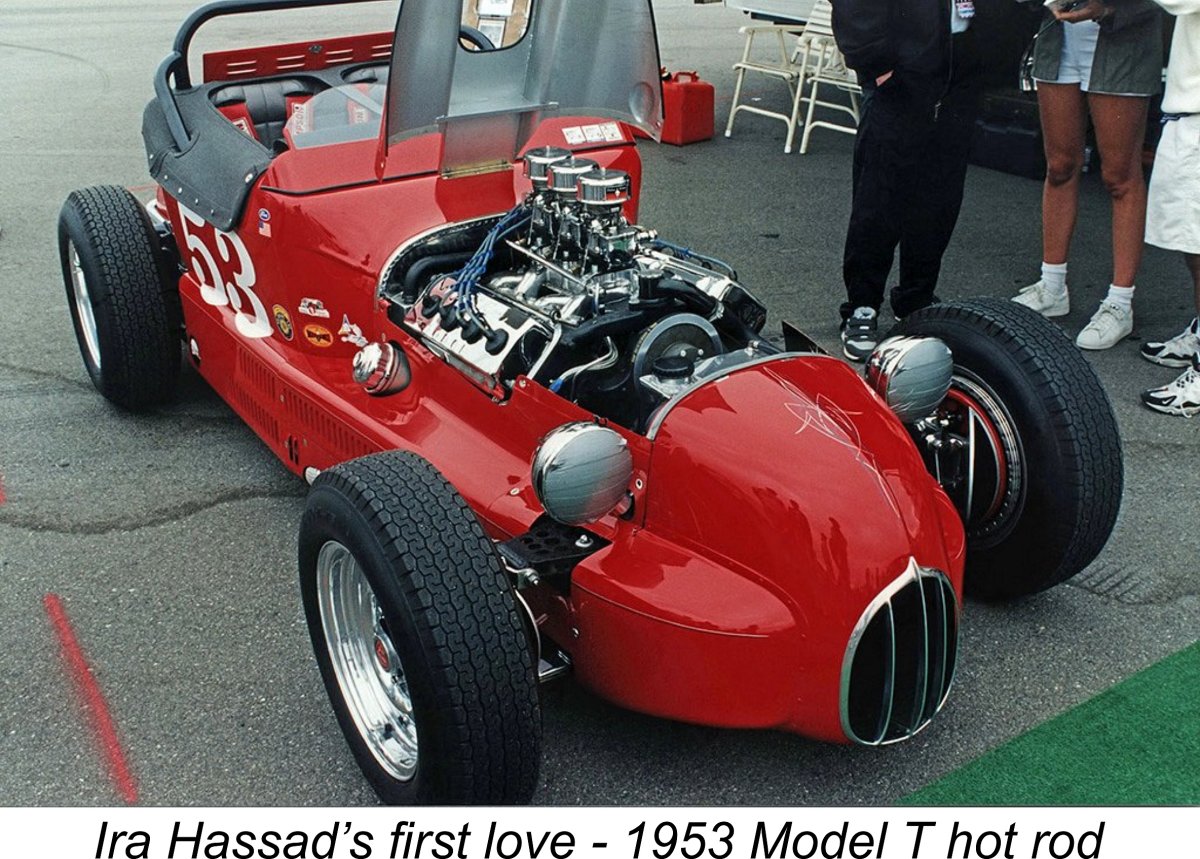
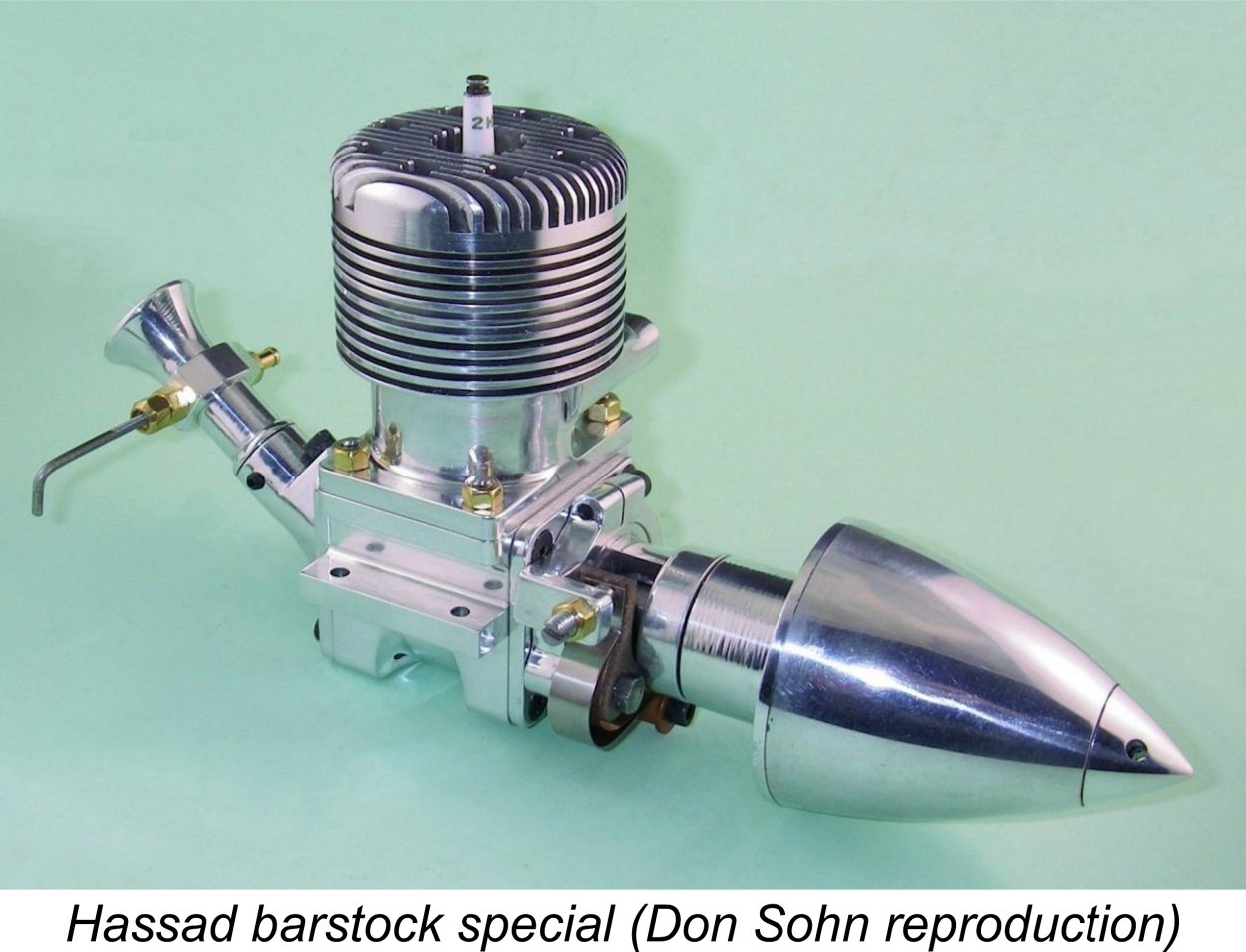
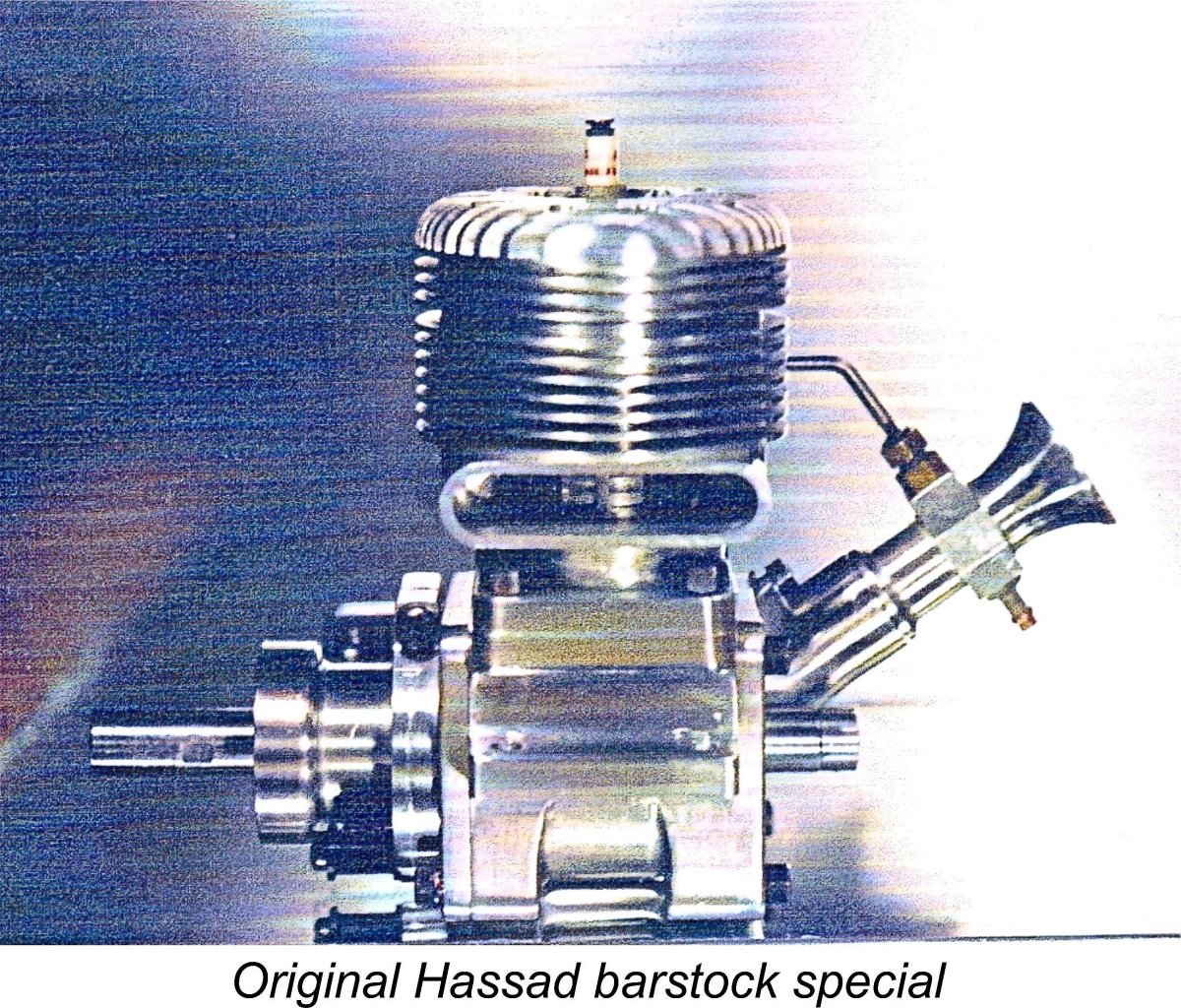
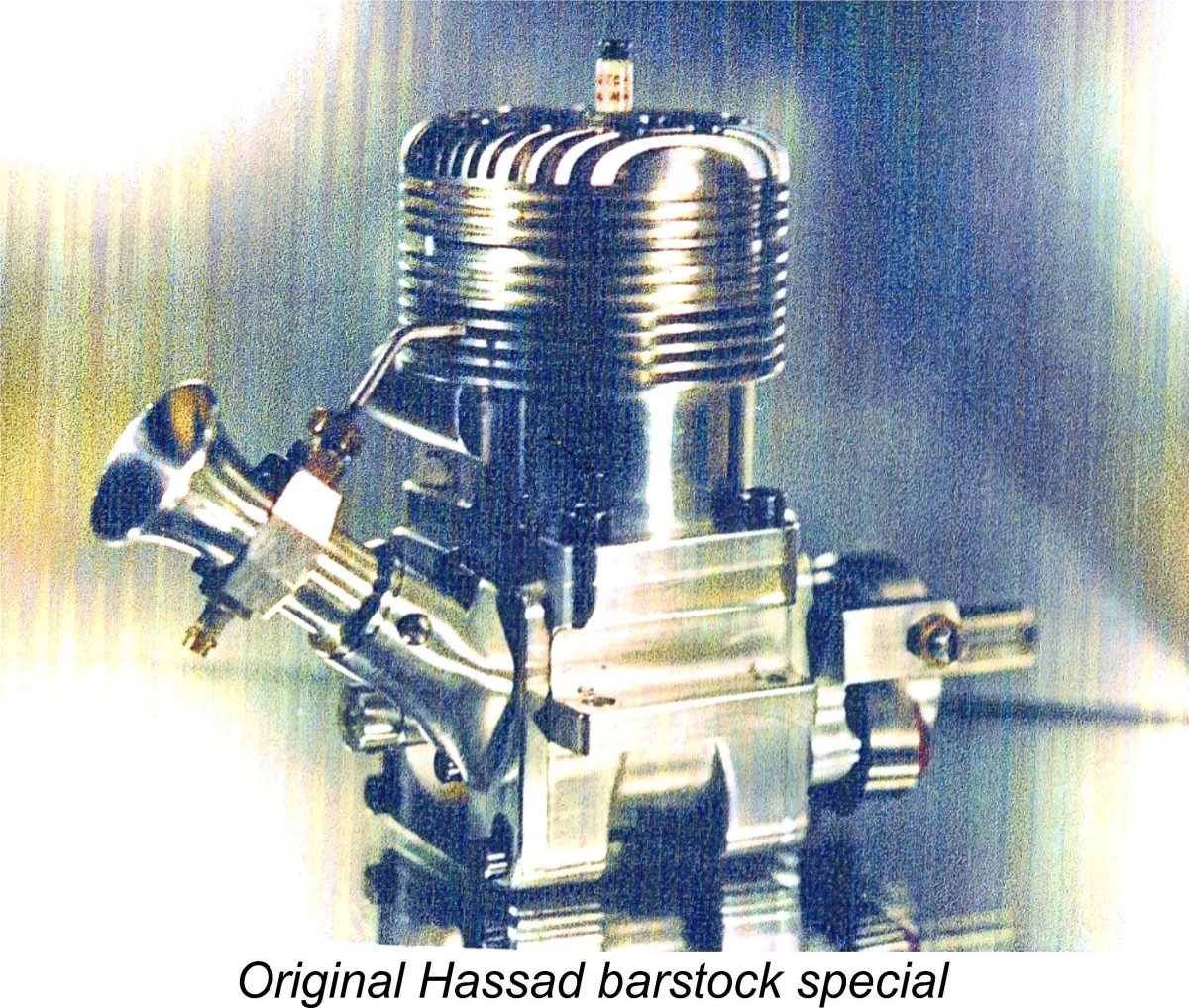
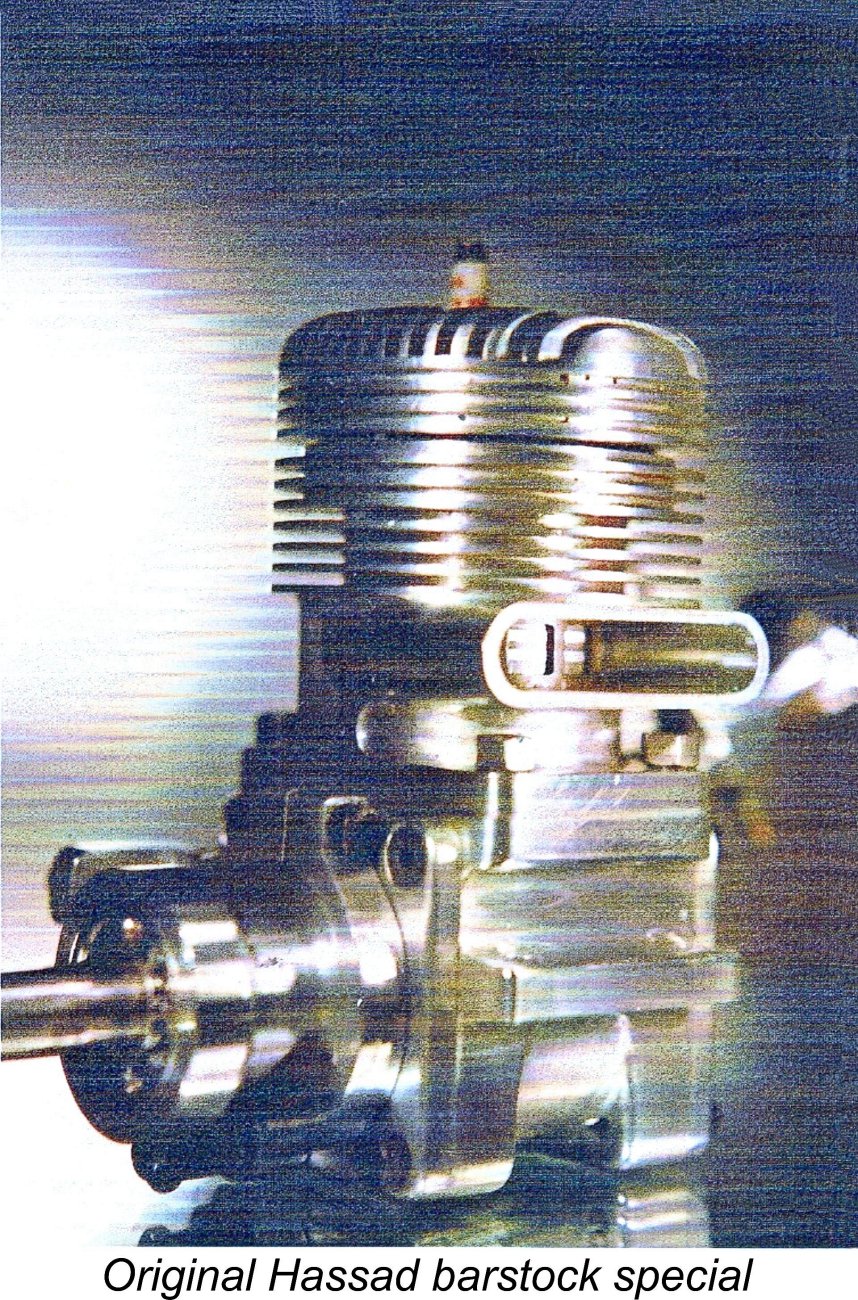 This decision freed Don to consider utilizing a few existing components when re-creating this engine. He chose to begin by planning to employ a Yellow Jacket piston and sleeve together with a Yellow Jacket crankshaft which was fitted to the con-rod without the needle roller bearing at the big end.
This decision freed Don to consider utilizing a few existing components when re-creating this engine. He chose to begin by planning to employ a Yellow Jacket piston and sleeve together with a Yellow Jacket crankshaft which was fitted to the con-rod without the needle roller bearing at the big end. 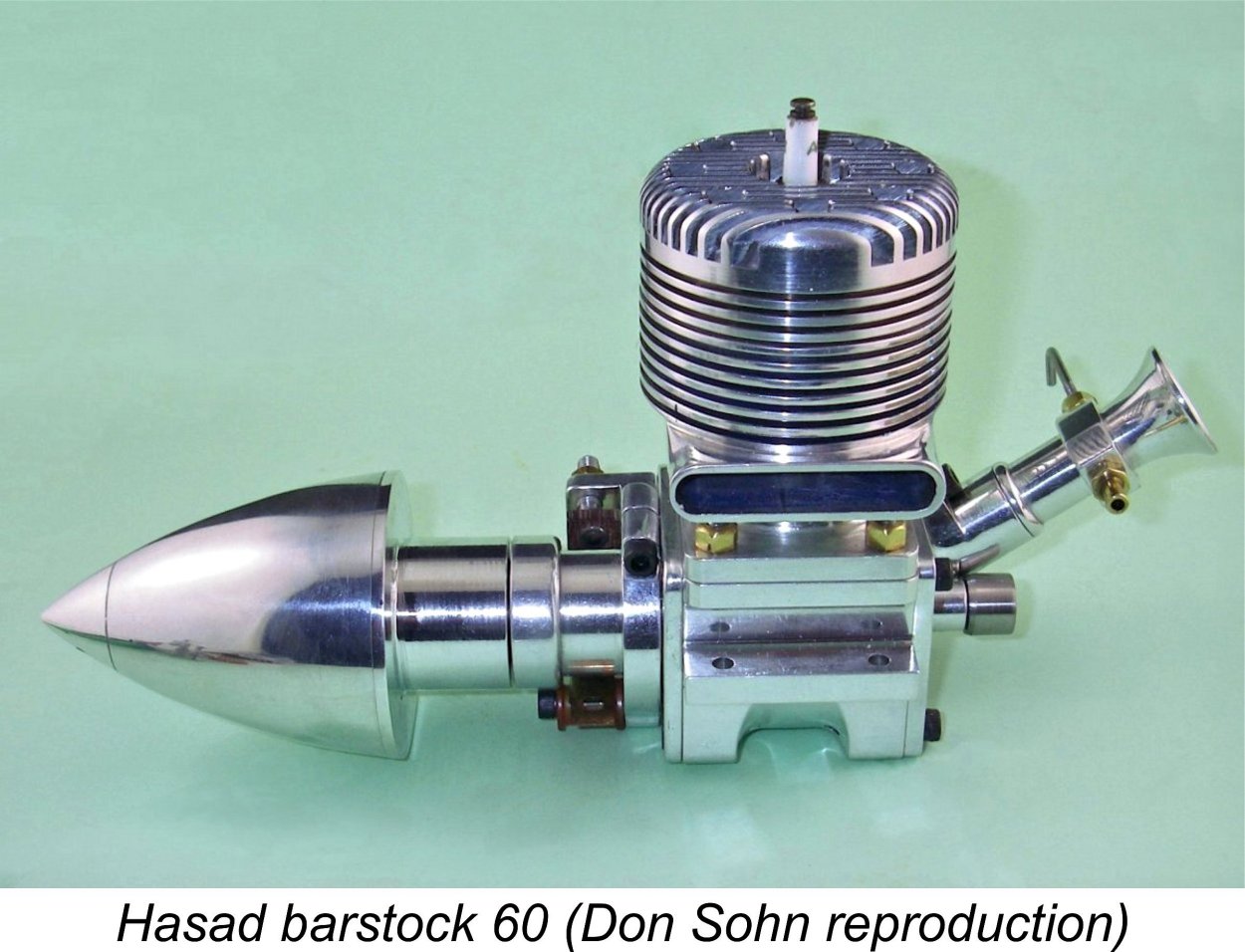 One somewhat tenuous connection with the earlier design of the Bluestreak 65 is the left-hand orientation of the single exhaust stack. This was fairly unusual at the time, although it became something of a "trademark" style with K&B. As I've shown in
One somewhat tenuous connection with the earlier design of the Bluestreak 65 is the left-hand orientation of the single exhaust stack. This was fairly unusual at the time, although it became something of a "trademark" style with K&B. As I've shown in